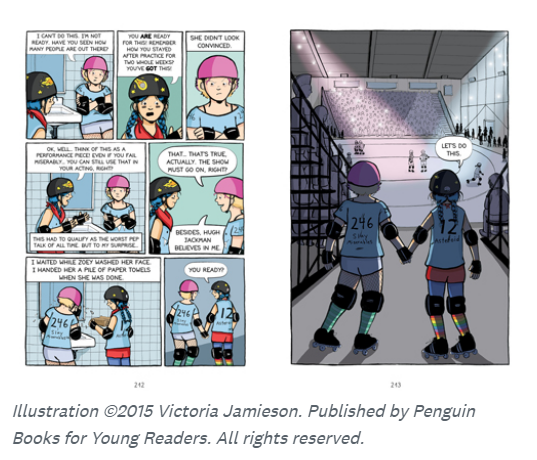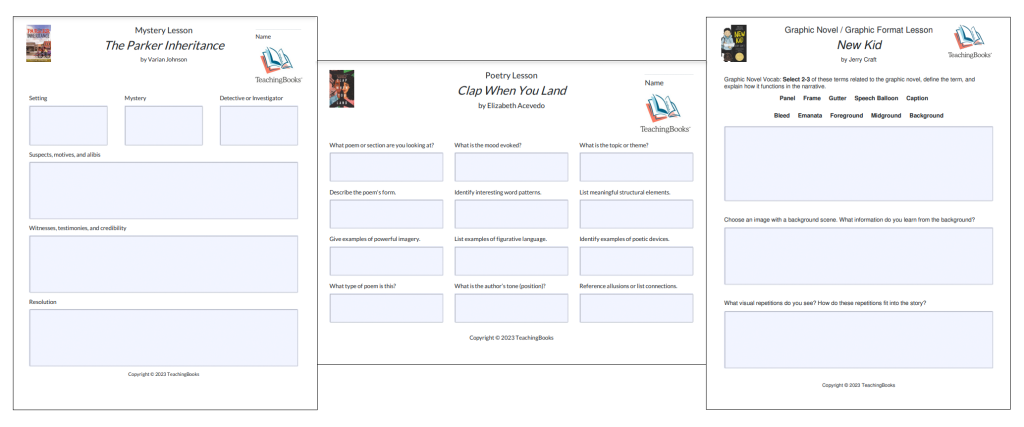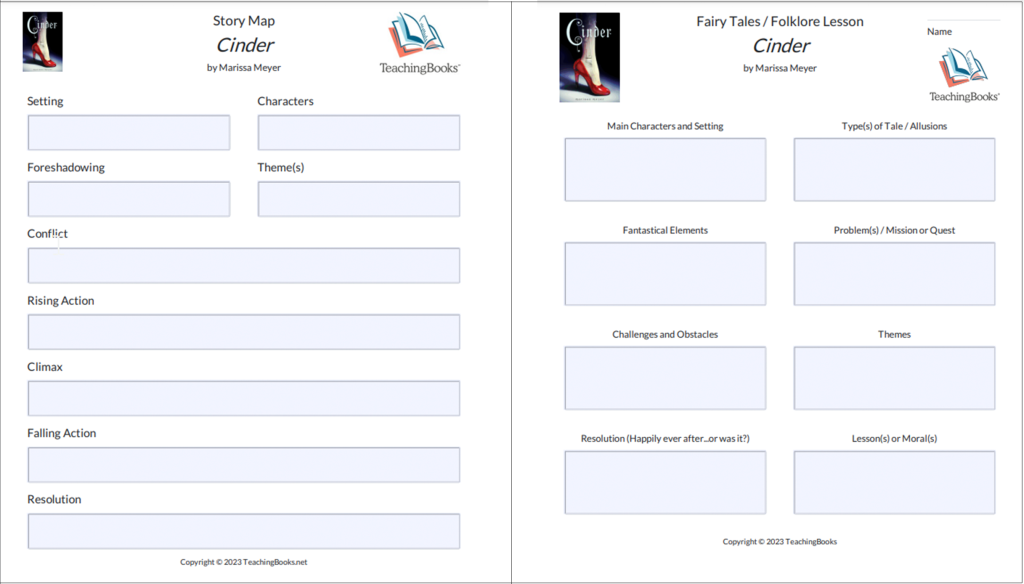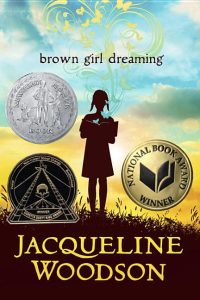
TeachingBooks has a number of multi-leveled lessons that offer scaffolded learning opportunities for considering genre, cultural representation, and storytelling. The ideas below can help you think about how to incorporate these resources into your teaching.
Have you explored our selection of Multi-Leveled Lessons? TeachingBooks offers a range of ready-to-use lessons to engage the readers you are working with. Current categories include Story Map, Cultural Representation Reflection, Nonfiction Read and Respond, Poetry, Mystery, Fairy Tales/Folklore, and Graphic Novel/Graphic Format.
Each Multi-Leveled Lesson offers three or four levels of differentiation, with language and prompts becoming more sophisticated as the levels progress. On the second page of each lesson, you’ll find customizable spaces where you can adjust the questions to reflect your learning targets. We leave it to you to determine which levels best suit your students, but we offer here some ideas for how to make the most of the Multi-Leveled Lessons you choose to use.
Bring the author’s voice into a customizable question.
For example, in the Meet-the-Author Recording for the graphic novel Roller Girl, author and illustrator Victoria Jamieson describes her illustration process for a significant scene: “On page 212 I used quite a few panels, while on page 213 I used only one big panel.” Copy the link for Jamieson’s Meet-the-Author Recording into a customizable space and craft a question that draws on the illustrator’s comments, such as “According to Jamieson, what is the significance of changing the panel sizes for this particular scene?”

Use the lessons to develop shared vocabulary for a genre.
With a Level 3 Mystery lesson, for example, students learn about language including clues, resolution, alibi, testimony, and credibility; a Level 3 Poetry lesson asks students to consider imagery, figurative language, and allusions, among other terms; and a Level 3 Graphic Novel lesson asks students to define graphic novel vocabulary such as panel, frame, and gutter, among others.

Pair two different Multi-Leveled Lessons in a book club.
Offer half the group the Story Map, while the other half of the group fills in the Cultural Representation Reflection. Then have each half of the group share what they answered to enrich discussion and consider how narrative structure and cultural context interact.
Jigsaw learning with multiple lesson types for one book.
For instance, Jacqueline Woodson’s Brown Girl Dreaming has a Multi-Leveled Lesson for Poetry, Nonfiction, and Cultural Representation Reflection. Have one group complete the Poetry lesson, another the Cultural Representation lesson, and another the Nonfiction response.
Put fairy tales in conversation with storytelling structures.
Have students fill out a Story Map and a Fairy Tale lesson for a fairy tale text and consider where some of the questions are similar and where they begin to depart. Consider the significance of thinking about fairy tale concepts like a fantastical elements or a mission or quest along with storytelling standards like foreshadowing and conflict. (Note: This idea works best with a Level 4 Story Map and Level 4 Fairy Tale lesson.)

Use levels to track a reader’s progress in individual reading.
Offer a new Multi-Leveled Lesson level for each new book a student reads, or have them complete a new level after reading a few chapters of the same book.
There’s much more to explore with our Multi-Leveled Lessons! View this two-minute instructional video on using these lessons, and explore all lessons via the links below. Don’t forget to review our tips for disturbing the lessons, as well.
Explore all Multi-Leveled Lessons:
Cultural Representation Reflection | Fairy Tales/Folklore | Graphic Novel/Graphic Format | Mystery | Nonfiction Read and Respond | Poetry | Story Map
What’s working for you?
We’d love to hear how you’re using TeachingBooks resources in your classrooms and libraries! Leave your ideas in a comment below.


Leave a Reply